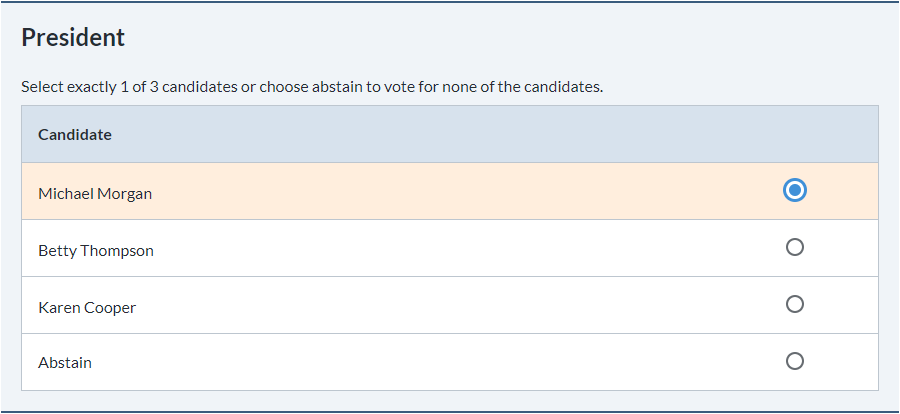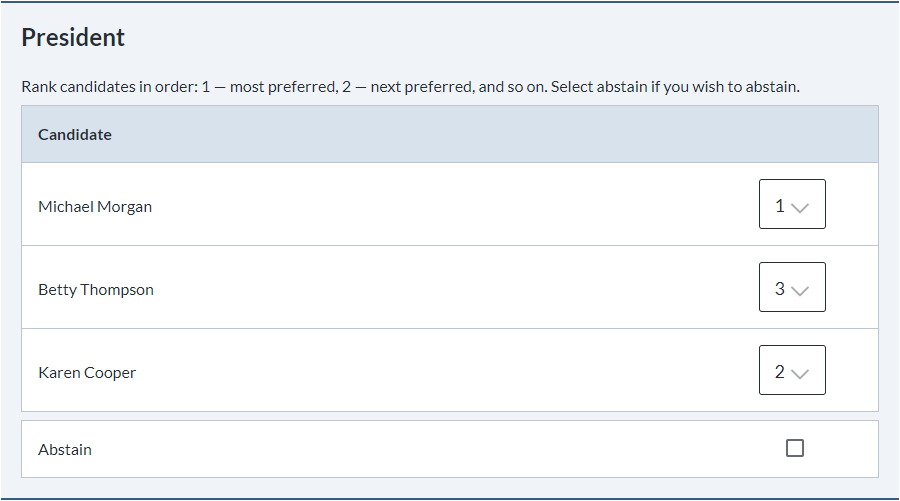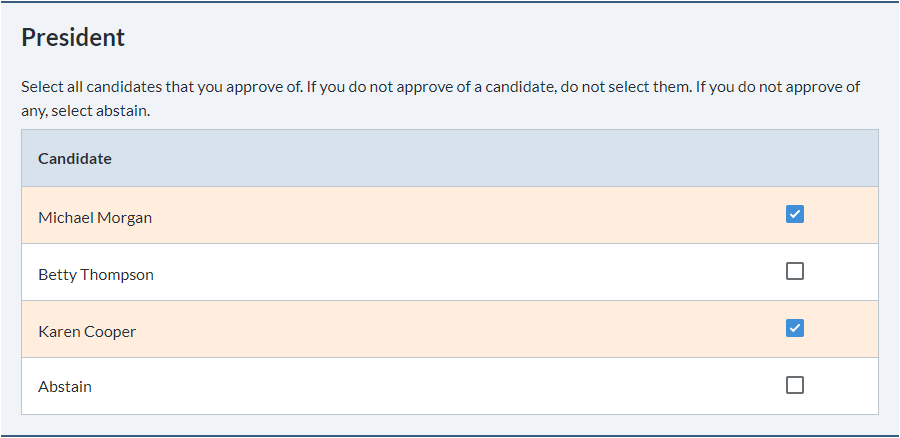What is an Executive Officer Election?
An Executive Officer election is one in which voting members elect a single candidate to a position, such as President, Vice-President, Secretary, Treasurer, etc.. Hence, they are known as “single-winner” elections.
Executive Officer elections are highly prevalent, and are most recognizable as the type of elections that are run federally, provincially, and municipally. Prime Ministers/Presidents, Premiers/Governors, and Mayors are all elected via an Executive Officer election. There are a large variety of of positions that could be apart of an Executive Officer election, not just the typical ones listed earlier. Different organizations may have specific or unique Executive positions.
Usually, there would be multiple candidates competing for this single spot. If there is only one candidate running for the single spot, the Executive Officer election is also known as a Candidate Acclamation.
Possible Voting Methods for an Executive Officer Election

ElectionBuddy offers several voting methods that are well-equipped for a single-winner election like an Executive Officer election. The most common method, and the method used typically for government elections in North America, is known as plurality.
Some popular alternatives to plurality for single-winner elections include:
Preferential

Also known as a ranked ballot, or instant runoff voting, preferential is a well-loved voting method. It is excellent for election administrators who are trying to get a good grasp as to how their voters truly feel about the available candidates. This is because ranking candidates based on preference paints a picture of how the voters feel about the candidates in comparison to the other candidates.
Approval

Although it isn’t as common as preferential or plurality, the approval voting method is a possible option for an Executive Officer election. It combines some of the best parts about both plurality and preferential. Voting is simple, like plurality (i.e. you just click the candidates you like), but multiple candidates can be selected, kind of like preferential (where you are ranking multiple candidates). Even though multiple candidates can be selected, only the candidate who is selected most often is the winner, as it is a single-winner voting method.
Scored

The diverse nature of scored voting allows it to be used as a single-winner voting method. Candidates are scored, and the candidate with the highest average score at the end of the election is declared the winner. Scored voting is a more obscure choice for an Executive Officer election.
Common Ballot Features Used in Executive Officer Elections
Common features used when building a ballot for an Executive Officer election include:
- The “Abstain” option, which allows for voters to abstain from voting on the Executive Officer ballot question.
- Allowing for write-ins, which provides an alternative route for voters who don’t approve of the candidate(s) listed for the Executive Officer position.
- Random order of your listed candidates changes the order of the candidates each time a voter opens the ballot. This helps eliminate the Ballot Order Effect, which states that candidates are more likely to be voted for when their position on the ballot is higher in relation to the other candidates.
- Candidate profiles, which are an excellent way to inform your voters about the candidates running for the position. This allows them to make an educated choice on which candidate they should vote for without forcing them to leave the ballot to look up the information on a different web page.